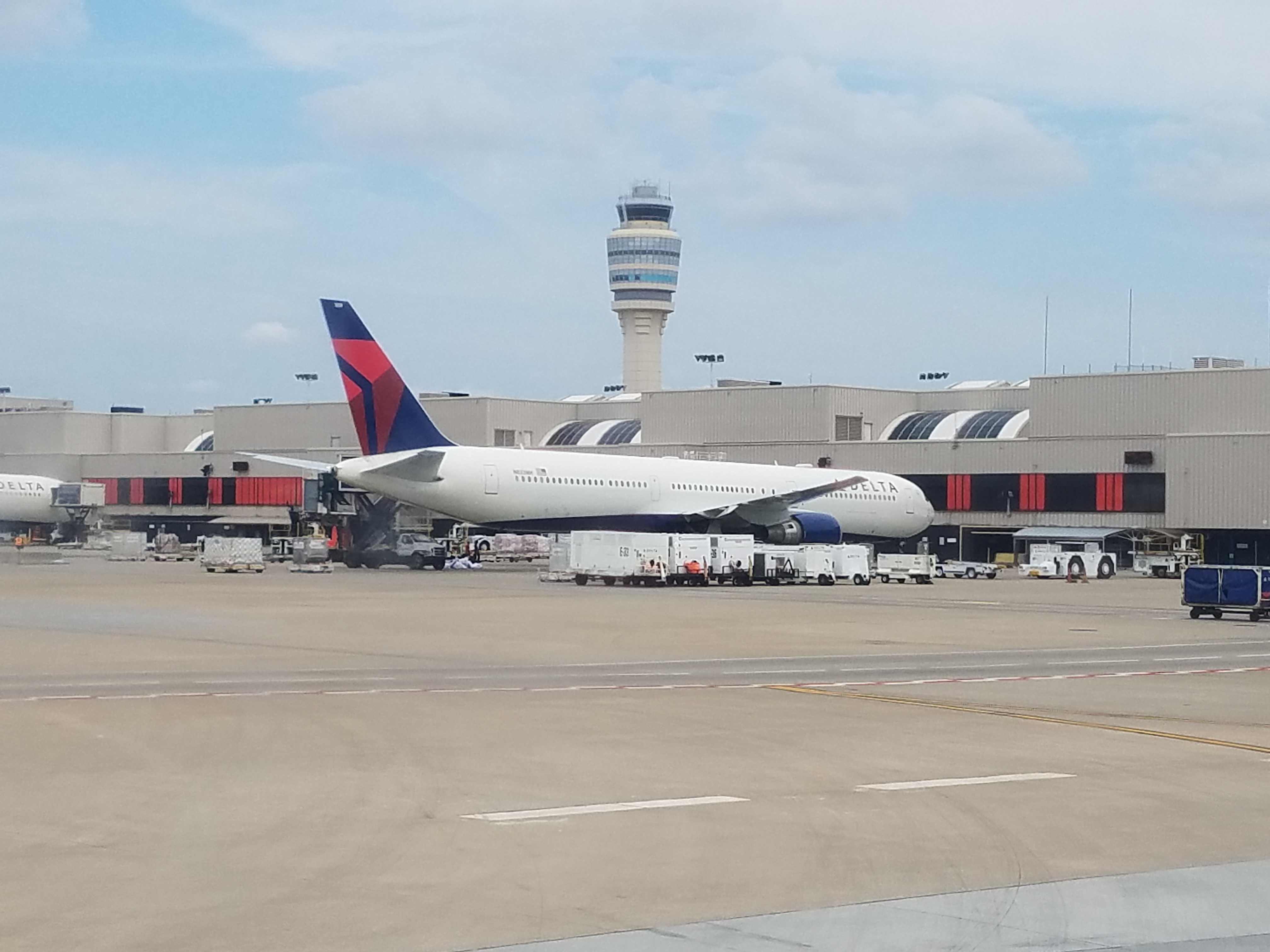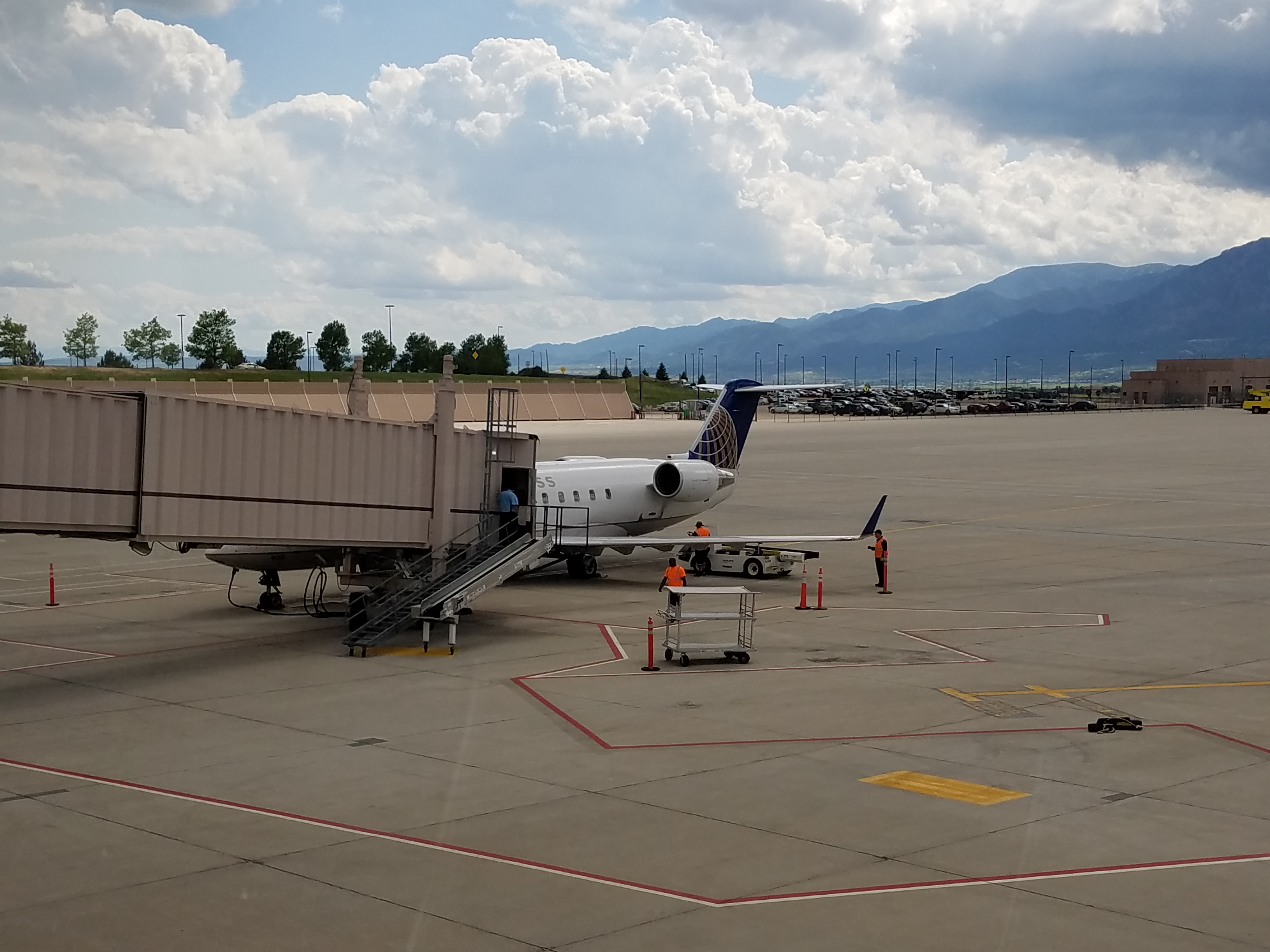More or less the only dimension along which US airlines compete is fares. Their products are otherwise extremely similar. Delta is a little more reliable. United has a little better mileage program.
But they compete largely on price and not quality. American has reduced the number of extra legroom coach seats and is introducing the 737 MAX with less space between seats than ever before. Legroom in Delta first class is shockingly tight.
Last year airlines’ got at an average of 14.1 cents for every passenger mile flown, down from 14.44 cents in 2015, and 15.71 cents in 2014.

Since United and then American copied Delta in:
- Awarding miles based on price of a ticket rather than distance flown
- Requiring minimum ticket spend for elite status
That means fewer redeemable miles being earned from flying — at a time when the price of awards has been going up and continues to do so — and more travel necessary to meet elite status spending requirements. As programs go revenue-based, falling average fares make those programs less valuable automatically. Customers buying the fares that airlines offer won’t be rewarded as much.
Already the move to revenue-based mileage earning was a devaluation.
- The number of miles required for an award has been going up, even for an airline’s highest-spenders.
- The break-even spending per mile to earn the same mileage as before was set between 18 and 21 cents per mile, when the average fare was around 15 cents. You had to be a high spender just to break even, putting the lie to the idea that high spenders were being rewarded more (while each mile was worth less).
Now lower fares mean fewer miles.

To be sure elite status spending requirements are generally set at 12 cents per mile, which is less than the average fare. However the gap between minimum and average is shrinking.


This is going to be my problem this year on AA. As a domestic Y traveler did a decent amount of work travel but it was all dirt cheap. Going to hit the EQM mark but will be 2k short of the EQD mark most likely.
Cheap prices and why they’re bad for customers!
Seems likely that a high number of “buy back your status” offers will be made to AA Elites this year.
As Gary noted, the product is not differentiated. This is actually better for travelers like me who are free agents. The elite benefits are worth and less or can be duplicated with a credit card so why chase top tier elite status? I buy first class when I need it (its way cheaper than ever), I earn some level of status on every airline so I can pick a seat and don’t pay for luggage. I won’t connect unless its ridiculously cheap. I’m not going to waste my time in Denver, Atlanta or Dallas for a non-loyal loyalty program. I’m no longer beholden to any one airline for a better travel experience -they are all the same! The airlines have killed the golden goose. They will really feel the pain in the next recession.
Gary, have you seen drop in outstanding miles that airlines report in their 10K? My guess is that while 2/3rds (at least a majority) of miles are issued through credit card companies and other vendors, give the devaluation, people are spending on credit cards, and earning less miles through flying. This should result in outstanding miles going down or least fewer miles issued every year.
I’m AA Platinum this year and could likely hit the EQM requirements but I am only like 50% of the way there on EQDs. So I guess I’ll just settle for lowly Gold next year.
Sure am going to miss choosing the preferred seats at time of purchase.
rjb has it right. Here’s my policy: if it’s important enough for me to be somewhere domestically, it’s important enough to buy F, and if it’s not important enough to justify an F fare, then it’s not important enough for me to be there. This pretty conveniently leads to rjb’s point: since domestic F is pretty much the same everywhere outside of NYC-west coast premium routes, one can truly be a free agent. A meal might be better or whatever. But if I’m going, I buy most convenient F. To be fair, being based out of CLT, that ends up being AA a lot of the time anyway, but surprisingly, not *all* of the time, and all of that latter business is money AA has lost out on from me–in the past I’d be on US everywhere.
Now that domestic F is a lot more affordable, I’m starting to care less and less about status. Upfaring for a modest amount or buying F outright is a lot more fun than playing upgrade roulette.
Gary, interesting observations. This also means:
1. Fewer elites to compete with for those who make higher level status (which makes a more elite program).
2. Alaska stands out with the easier “higher level” elite level program. Alaska is differentiated including its asymmetric network.
3. Levels with a CC waiver are at the sweet spot. Example Plat 75K level on United.
4. A defined bias toward customers that spend on higher fares, as far as status is concerned. Also certainly a bias to international vs domestic travel.
Since ~70% of the business is with 4 carriers, I wonder if additional players/carriers will be attracted into the industry.
the “free agent” concept works fine if you don’t really fly foreign airlines. alliance benefits are still very tangible because they’re so clearly stated, and you rarely have issues with things like lounge access or priority boarding just with your alliance-wide status.
now compared that to this chaotic list employed by DL (since they don’t really believe in alliances) :
Platinum Medallion® Members
Gold Medallion® Members
Delta Comfort+® customers
Flying Blue Platinum and Gold members
Virgin Atlantic Flying Club Gold members
Virgin Australia Platinum and Gold members
GOL Smiles Diamond members
SkyTeam® Elite Plus members
Gary:
There is another aspect of falling airfares – the airline miles become less valuable because award charts are creeping up at the same time. Would you like to fly around Christmas time from JFK to LAX (one way)? Then you would have to use at least 30K for AA in Y for any day from Dec.19 through Dec.27. Or pay $174 in cash on Dec.19. That is $0.0058/mile redeemed! This is the reason to ditch all of airline-affiliated credit cards (except signup bonuses if one cares).
@henry lax. W/r/t foreign travel and alliances, they are fairly useless. I get lounge access from Priority Pass. PP lounges overseas are sometimes much better than domestic airline lounges. Priority boarding? Meh.
I loved being single when I was young man. As a free agent, I feel “single” when I’m traveling.
“Chasing” elite status NEVER made sense. Doesn’t now – didn’t back in the “good old days.” Those that think it did are deluding themselves.
And I reached EXP this year with less flying, and less spend than last year. And actual spend notably below $12K, with no AA credit card, and mostly lowest Y purchases. It’s not that difficult.
Not sure I would agree airfares have fallen over the long term, at least on routes I fly. Averages don’t always tell the whole story and fail to include ancillary fees. Two popular routes:
SFO/OAK/SJCBUR/LAX/SAN used to see frequent WN fare sales $29-39 one- way (with UA price matching). Now the regular advance fares are $100-120 and the sales are $59 one-way. Similarly for SFO/LAXNYC/WAS the legacy carriers would run fare sales $200-300 RT. Now the regular advance fares are $500 and you are happy to see a sale fare <$400. Now two anecdotes don't make a case but I think the average fare is a very misleading metric. And yes I am excluding ULCCs because they don't offer meaningful elite status or a travel experience that most of us want.
As for elite status it is still based on miles flown so by your metric it actually costs less to fly the qualifying distances. Of course there is now a spend requirement, but that's more a problem for elites who rely on leisure travel.
@Boraxo – DOT data on this is pretty clear, though it’s not guaranteed across every route
What I find quite funny is for those of You that flaunt that You are suddenly a self proclaimed FREE AGENT and have No Loyalty to Any of the Big Three Carriers You are Only fueling Their Drive to Diminish benefits and They KNOW That! Revenue Based is The ONLY Way to truly Reward a LOYAL Flyer…..cheap tickets and expected Upgrades…..Who in Hell are You kidding? That type of traveller is pretty much a Garbage Fare/ Low Yield Drain. As a Business Owner, I wouldn’t operate My Business catering to Low Yielders and neither should the Airlines. NOBODY gets a Free Ride….You are Loyal or You are Not. STOP deluding Yourselves